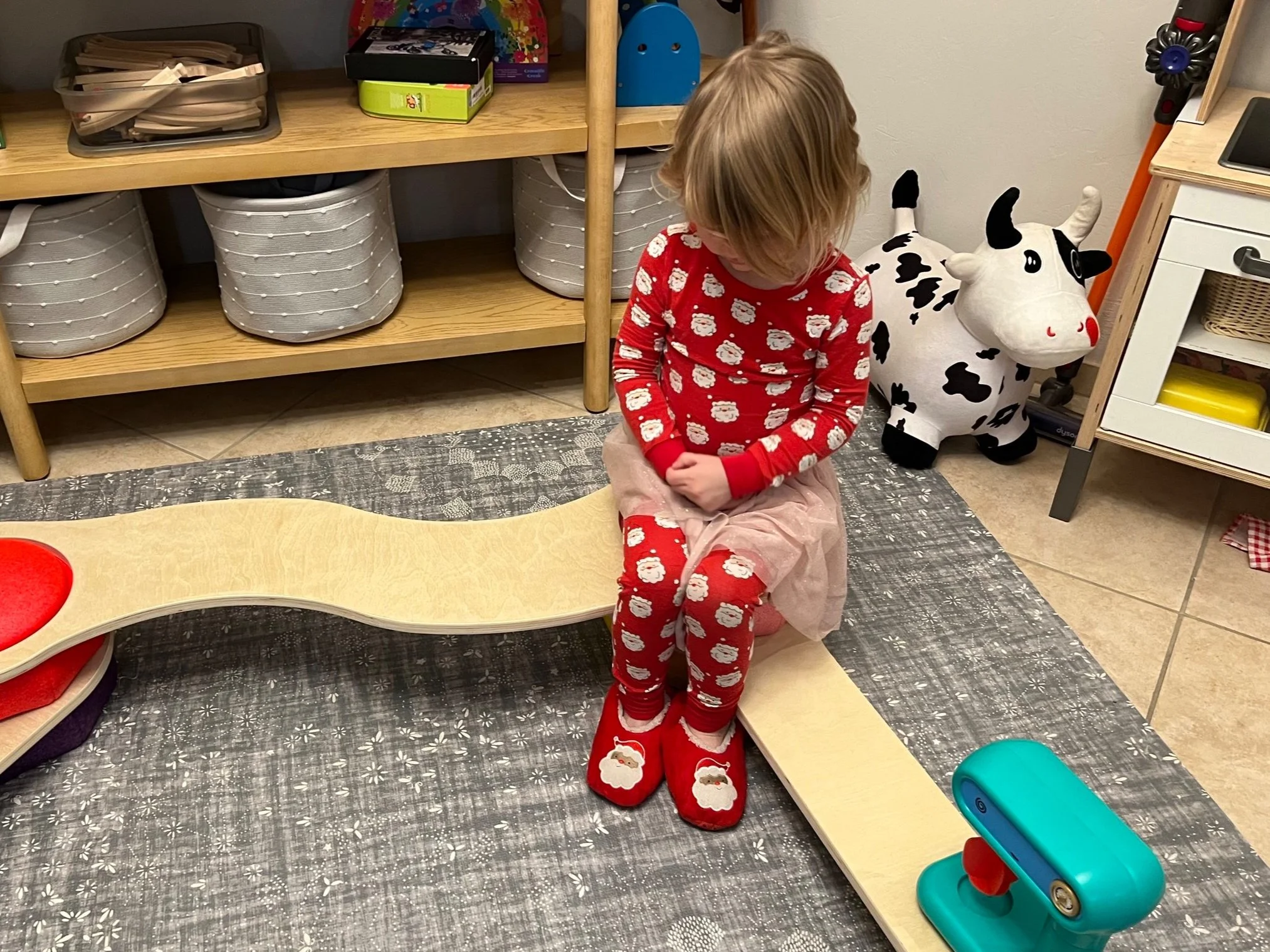What Every Parent Needs to Know About: W-Sitting
What is W-sitting?
W-sitting is a position where a child sits with their bottom between their feet, placing the legs in a “W” shape. Since children are inherently more flexible than adults, most of them can get into a W-sitting position and will experiment with it at some point in their development. But W-sitting can sometimes create issues, so lets dive more into this position and when we need to be concerned!
W-sitting places the hips and knees in an extreme position, and this repeated stress to the joints over time increases a child's risk for joint issues or pain.
When in a W-sit position the legs provide a wide base of support, requiring very little activation of the core muscles to sit up. This can contribute to core weakness in some children, especially children with low muscle tone.
Lastly, because of the wide base of support and the position of the legs, it is not as easy to transition in and out of sitting, so some children may be less dynamic during their play.
Is W-sitting bad?
Like everything in development, variety is important! If a child w-sits occasionally, and they also sit in a lot of different positions, I generally am not worried. If a child w-sits the majority of the time (either by ability or choice) then I generally want to understand why and intervene to support more variety in sitting position.
What can I do at home for W-sitting?
If you notice W-sitting you can either use a verbal cue or assist your child into a different sitting position, depending on their age. I always recommend using a consistent verbal cue between all caregivers, even if your child does not understand yet as this will make it easier in the long run!
You can also encourage your child to sit on a bench or chair with their feet down. A cube chair is a great option for this! (Click here for one of our favorite cube chairs)
When should I seek support for W-sitting?
If you are concerned about w-sitting, watch your child play for a couple of days.
Do they prefer W-sit most of the time, even if you remind them to change position?
Do they get tired easily and W-sit more towards the end of the day?
Do they sit with a very rounded trunk and seem to have a hard time holding their body up?
Other questions you can ask yourself are:
Do they/did they have a hard time meeting motor milestones?
Do they seem to struggle with sitting up if they are laying down?
Will they hold a squat to play or do they always plop onto the floor?
If they are standing/walking, do they seem clumsy or fall often?
Do they have a hard time keeping up with their peers?
If you answer yes about your child any of these questions I recommended working with a pediatric PT to understand why your child may be W-sitting and specific recommendations to support their unique needs! Additionally If your child has a medical diagnosis that impacts their development (such as Down syndrome or Cerebral Palsy) there are special considerations for joint health and long term function that we can help with!
Contact us today and let us help you understand and support your child!
The information provided in this blog post is for educational purposes only and not intended to be medical advice. Consult a medical professional or healthcare provide for diagnosis and treatment.
As an Amazon Associate I earn from qualifying purchases.



